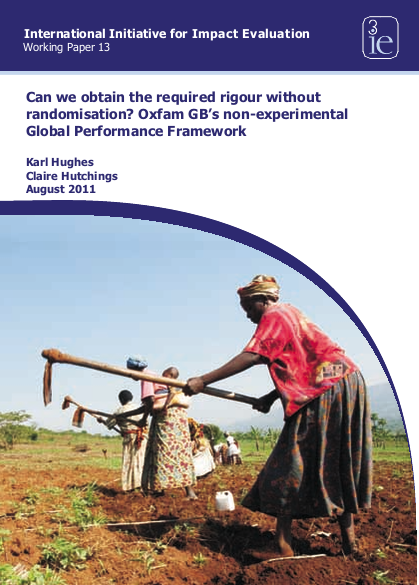International Initiative for Impact Evaluation Working Paper 13

NGOs operating in the international development sector need credible, reliable feedback on whether their interventions are making a meaningful difference but they struggle with how they can practically access it. Impact evaluation is research and, like all credible research, it takes time, resources, and expertise to do well, and – despite being under increasing pressure – most NGOs are not set up to rigorously evaluate the bulk of their work. Moreover, many in the sector continue to believe that capturing and tracking data on impact/outcome indicators from only the intervention group is sufficient to understand and demonstrate impact. A number of NGOs have even turned to global outcome indicator tracking as a way of responding to the effectiveness challenge. Unfortunately, this strategy is doomed from the start, given that there are typically a myriad of factors that affect outcome level change. Oxfam GB, however, is pursuing an alternative way of operationalising global indicators. Closing and sufficiently mature projects are being randomly selected each year among six indicator categories and then evaluated, including the extent each has promoted change in relation to a particular global outcome indicator. The approach taken differs depending on the nature of the project. Community-based interventions, for instance, are being evaluated by comparing data collected from both intervention and comparison populations, coupled with the application of statistical methods to control for observable differences between them. A qualitative causal inference method known as process tracing, on the other hand, is being used to assess the effectiveness of the organisation’s advocacy and popular mobilisation interventions. However, recognising that such an approach may not be feasible for all organisations, in addition to Oxfam GB’s desire to pursue complementary strategies, this paper also sets out several other realistic options available to NGOs to step up their game in understanding and demonstrating their impact.
These include:
- partnering with research institutions to rigorously evaluate “strategic” interventions;
- pursuing more evidence informed programming;
- using what evaluation resources they do have more effectively; and
- making modest investments in additional impact evaluation capacity.
